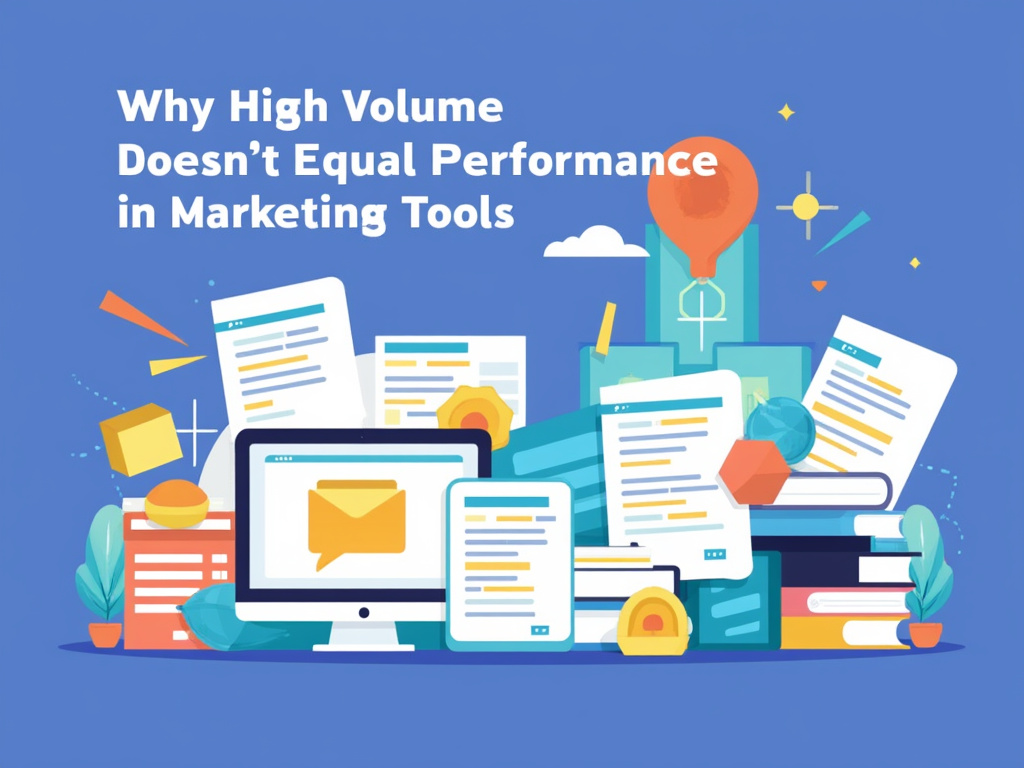Why High Volume Doesn’t Equal High Performance in Marketing Tools

In the dynamic world of e-commerce, having the right marketing tools can make a world of difference. However, it’s essential to recognize that not all tools designed to handle high volumes of tasks or data can deliver high performance. As e-store owners, we often chase metrics and tools that tout impressive capabilities, but it’s crucial to understand that sheer volume doesn’t inherently guarantee effectiveness. Let’s dive into why this is the case and explore how you can assess the real value of your marketing tools.
Understanding Performance vs. Volume
When we talk about marketing tools, especially in the context of e-commerce, we often encounter the allure of high-volume functionalities. These tools promise scalability and the ability to manage large datasets, automate countless emails, and track numerous KPIs. While handling high volumes is indeed essential, high performance is characterized by how effectively those tools help achieve your business objectives.
The distinction between performance and volume can be likened to a high-speed train: just because it can carry many passengers doesn’t mean it gets to the destination faster or more efficiently.
Key Indicators of High Performance
Instead of getting caught up in the hype of high-volume capabilities, focus on identifying tools that exhibit genuine high performance. Here are some key indicators to consider when evaluating your marketing tools:
- Targeted Automation: Does the tool provide targeted email sequences that resonate with your audience? For instance, platforms like Incomaker can help craft personalized email campaigns that enhance customer engagement, rather than just blasting out generic messages.
- Insightful Analytics: High-performance tools offer in-depth analytics that allow you to glean actionable insights from your data. Look for tools that don’t just show you numbers, but help you interpret them to inform your strategy.
- User Experience: A complex tool with numerous features may be powerful, but if it’s hard to navigate, it can slow you down. A user-friendly interface ensures that you and your team can utilize the tool efficiently.
- Integration Capabilities: Successful marketing strategies often depend on multiple platforms working seamlessly together. High-performance tools easily integrate with your existing systems, ensuring a smooth flow of data.
- Return on Investment (ROI): Ultimately, the best measure of performance is ROI. Evaluate not just how many emails you send or how much traffic you drive, but whether these actions lead to sales and customer retention.
The Dangers of Volume-Driven Thinking
Chasing volume can lead to critical pitfalls. Many e-store owners fall into the trap of believing that a high email send rate equates to higher sales. However, indiscriminate emailing often leads to diminishing returns—customers become desensitized or annoyed, resulting in unsubscribes or negative brand perception.
Moreover, high-volume tasks can dilute the quality of your marketing efforts. When the focus shifts to quantity, the messaging may become generic, missing opportunities to create meaningful connections with customers. This strategy often backfires, reducing your effectiveness over time.
Leveraging Incomaker for True Performance
Since we’re all about understanding the intricacies of marketing tools, let’s talk about Incomaker. This platform stands out in the competitive landscape by focusing on what matters most: results. With its emphasis on automation that drives customer engagement—such as personalized recommendations based on purchase history—Incomaker ensures your campaigns resonate with the right audience.
With Incomaker, you can also capitalize on detailed segmentation and behavior analytics, allowing you to craft tailored messages that engage customers—and not just in high volumes. The goal should always be to foster meaningful communication, transforming leads into loyal customers.
Making the Shift: Quality Over Quantity
As you evaluate your marketing tools, consider placing a greater emphasis on quality rather than just volume. Engage in regular audits of your marketing campaigns and the tools you deploy. Ask yourself the following questions:
- Are we tailoring our communications to different customer segments?
- Are we seeing measurable results from our email campaigns in terms of engagement and sales?
- Do our tools integrate smoothly, or are we battling to make them work together?
- Is our marketing strategy focused on building relationships rather than merely pushing out messages?
Transitioning from a volume-driven mindset to one focused on performance will unlock the potential of your e-store. When your tools are aligned with your goals—where every email sent and every campaign launched serves a purpose—you’ll find that you not only enhance customer satisfaction but also witness tangible business growth.
In a world oversaturated with data and metrics, remember that less can be more. When marketing tools support genuine engagement rather than just high-volume transactions, that’s when the magic truly happens.



